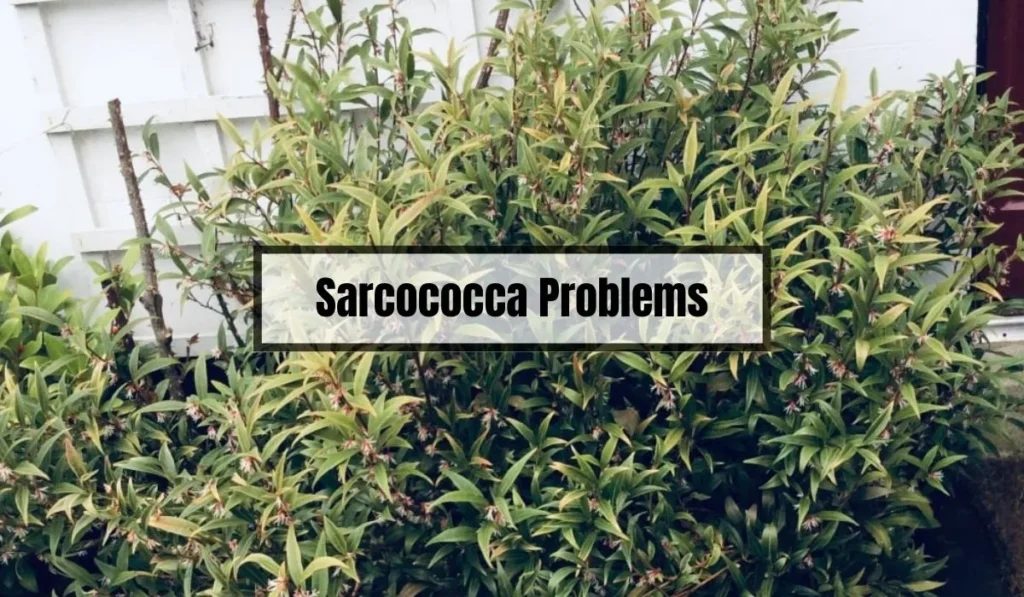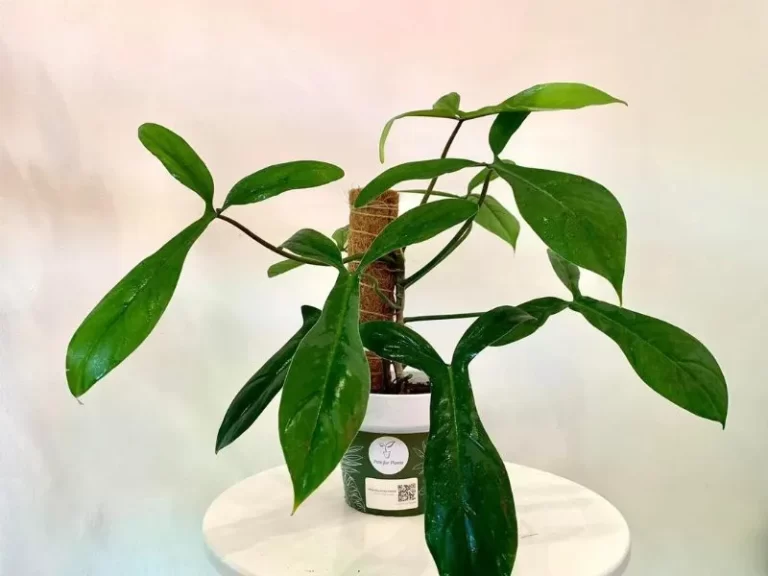Sarcococca Problems: Common Issues and Solutions
Are you a fan of Sarcococca plants but are having trouble keeping them healthy? Sarcococca is a genus of shrubs that are popular for their fragrant flowers and evergreen foliage. However, like any plant, they are susceptible to problems that can affect their growth and health. In this article, we will discuss some of the most common Sarcococca problems and how to prevent and treat them.
Understanding Sarcococca problems is the first step to keeping your plants healthy. Some of the most common issues include pest infestations, disease, and environmental stress. Knowing how to identify these problems and take action quickly can help you save your plants and keep them thriving.
In the following sections, we will take a closer look at these problems and provide some practical tips for dealing with them.
Key Takeaways
- Understanding common Sarcococca problems is essential for keeping your plants healthy.
- Preventive measures such as proper watering and pruning can help avoid many problems.
- Treatment options for Sarcococca problems include natural and chemical methods.

Understanding Sarcococca Problems
Sarcococca, also known as sweet box, is a popular evergreen shrub that is prized for its fragrant flowers and attractive foliage.
However, like any plant, sarcococca can experience problems that can affect its health and appearance. Here are some common sarcococca problems and how to deal with them:
Root Rot
Root rot is a common problem that can affect sarcococca, especially if the soil is poorly drained. Symptoms of root rot include yellowing leaves, wilting, and stunted growth.
To prevent root rot, make sure the soil is well-drained and avoid overwatering. If you suspect root rot, remove the affected plant and replant in a different location with well-draining soil.
Competition for Moisture and Nutrients
If you have a birch tree growing near your sarcococca, it could be competing for moisture and nutrients, which can lead to stunted growth and yellowing leaves.
To prevent this problem, make sure your sarcococca is planted in a location with adequate moisture and nutrients. You may also want to consider planting a barrier between the sarcococca and the birch tree to prevent competition.
Natural Shedding of Older Leaves
Sarcococca is an evergreen shrub, which means it should retain its leaves year-round. However, it is normal for sarcococca to shed its older leaves in the fall and winter. If you notice yellowing or dropping leaves during this time, don’t worry—it’s just a natural part of the plant’s growth cycle.
Pests and Diseases
Sarcococca is generally resistant to pests and diseases, but it can still be affected by certain problems. Boxwood blight is a fungal disease that can affect sarcococca, causing leaf spots, stem cankers, and defoliation.
To prevent boxwood blight, avoid planting sarcococca near infected boxwood plants and make sure to keep the soil well-drained. If you notice symptoms of boxwood blight, remove the affected plant and dispose of it properly.
I’ve had sarcococca growing in my garden for years, and I’ve found that it’s a relatively low-maintenance plant. However, I did have a problem with root rot a few years ago when I planted a sarcococca in a poorly-drained area. I ended up removing the plant and replanting it in a different location with better drainage, and it has been thriving ever since. Overall, sarcococca is a great choice for gardeners who want an attractive, fragrant shrub that requires minimal care.
Common Sarcococca Problems
Sarcococca is a genus of evergreen shrubs that are popular for their fragrant flowers and glossy foliage. However, like all plants, they are susceptible to various problems that can affect their growth and overall health.
In this section, we will discuss some of the most common sarcococca problems and how to deal with them.
Pest Issues
Sarcococca is generally not prone to serious pest infestations. However, there are a few pests that can cause problems for these shrubs, including:
- Scale insects: These small, oval-shaped insects attach themselves to the stems and leaves of the plant, sucking the sap and causing yellowing and wilting. You can control scale insects by using a horticultural oil spray or insecticidal soap.
- Mealybugs: These soft-bodied insects also feed on the sap of the plant and can cause stunted growth and yellowing. You can control mealybugs by using a horticultural oil spray or insecticidal soap.
- Spider mites: These tiny pests can cause discoloration and webbing on the leaves of the plant. You can control spider mites by using a miticide or by spraying the plant with a strong stream of water.
Disease Concerns
Sarcococca is generally not prone to serious diseases. However, there are a few diseases that can affect these shrubs, including:
- Boxwood blight: This fungal disease can cause leaf spots, stem cankers, and defoliation. It can be spread by infected plant material, so it’s important to dispose of any infected plant material properly. You can control boxwood blight by using a fungicide and maintaining good plant hygiene.
- Powdery mildew: This fungal disease can cause a white, powdery coating on the leaves of the plant. It can be controlled by improving air circulation around the plant and using a fungicide if necessary.
Environmental Challenges
Sarcococca can also be affected by various environmental challenges, such as:
- Poor drainage: Sarcococca prefers well-draining soil, so if the soil is too wet, the plant’s roots can rot. You can improve drainage by adding organic matter to the soil and planting the shrub in a raised bed.
- Drought: Sarcococca can also be affected by drought, which can cause wilting and yellowing of the leaves. You can prevent drought stress by watering the plant deeply and regularly during dry spells.
- Extreme temperatures: Sarcococca can be damaged by extreme temperatures, both hot and cold. You can protect the plant from extreme temperatures by planting it in a sheltered location and providing some shade during hot weather.
Preventive Measures for Sarcococca Problems
Sarcococca is a beautiful and fragrant plant that can add a lot of charm to your garden. However, like any other plant, it is susceptible to various problems that can hinder its growth and health. Therefore, it is essential to take preventive measures to keep your Sarcococca healthy and thriving. Here are some preventive measures that you can take:
Proper Planting
Proper planting is crucial to the health and growth of your Sarcococca. Here are some tips for planting your Sarcococca:
- Choose a location that receives partial to full shade and has well-draining soil.
- Make sure the soil is moist, but not waterlogged, when planting.
- Dig a hole that is twice as wide as the root ball and the same depth as the container.
- Add compost or organic matter to the soil to improve its quality and drainage.
- Water your Sarcococca regularly, especially during dry spells, to keep the soil moist.
Routine Maintenance
Routine maintenance is essential to keep your Sarcococca healthy and prevent problems. Here are some tips for routine maintenance:
- Prune your Sarcococca in the spring after flowering to maintain its shape and desired height.
- Remove any dead or diseased branches to prevent the spread of diseases.
- Fertilize your Sarcococca in the spring with a slow-release fertilizer to promote growth and health.
- Mulch around your Sarcococca with organic matter to retain moisture, suppress weeds, and regulate soil temperature.
Pest and Disease Control
Pest and disease control is crucial to prevent the spread of diseases and pests that can harm your Sarcococca. Here are some tips for pest and disease control:
- Inspect your Sarcococca regularly for signs of pests or diseases, such as yellowing leaves, wilting, or spots on leaves.
- Treat any pests or diseases promptly using organic or chemical methods, depending on the severity of the problem.
- Use insecticidal soap or neem oil to control pests, such as scale, mealybugs, or spider mites.
- Use fungicides to control diseases, such as leaf spot, powdery mildew, or root rot.
By following these preventive measures, you can keep your Sarcococca healthy and thriving. Remember to provide proper planting, routine maintenance, and pest and disease control to ensure the best possible growth and health for your Sarcococca.
Treatment Options for Sarcococca Problems
If you are having problems with your sarcococca plant, there are several treatment options available. The two main categories of treatment are organic and chemical. Here is what you need to know about each:
Organic Treatments
Organic treatments are a good option for those who want to avoid using chemicals. Here are some organic treatments you can try:
- Pruning: If your plant is infected with pests or disease, it may be necessary to prune away affected areas. Make sure to use clean, sharp pruning shears and dispose of any infected plant material away from your garden.
- Neem Oil: Neem oil is a natural pesticide that can be used to control pests like aphids and spider mites. Mix one tablespoon of neem oil with one gallon of water and spray on your plant.
- Beneficial Insects: Beneficial insects like ladybugs and lacewings can help control pest populations. You can purchase these insects online or at your local garden center.
Chemical Treatments
If organic treatments do not work, you may need to resort to chemical treatments. Here are some chemical treatments you can try:
- Insecticidal Soap: Insecticidal soap is a low-toxicity pesticide that can be used to control pests like aphids and spider mites. Mix one tablespoon of insecticidal soap with one gallon of water and spray on your plant.
- Systemic Insecticides: Systemic insecticides are absorbed by the plant and can provide long-term control of pests. However, they can also harm beneficial insects and should be used with caution.
- Fungicides: If your plant is infected with a fungal disease, a fungicide may be necessary. Follow the instructions on the label carefully and wear protective clothing when applying.
Remember, prevention is always the best medicine. Keep your plant healthy by providing it with the right growing conditions, including proper soil, water, and sunlight. Regularly inspect your plant for signs of pests or disease and take action as soon as possible. With the right treatment, your sarcococca plant can thrive and provide you with fragrant blooms for years to come.
Frequently Asked Questions (FAQs)
What is eating my Sarcococca?
If you notice holes in the leaves of your Sarcococca, it could be a sign of insect damage. Common culprits include aphids, spider mites, and scale insects. To get rid of these pests, you can use insecticidal soap or neem oil. Be sure to follow the instructions on the label carefully.
Why is my Sarcococca dying?
There are a few reasons why your Sarcococca might be struggling. One common cause is overwatering. Sarcococca prefers well-draining soil and can suffer from root rot if the soil is too wet. Another possible cause is poor soil quality. Sarcococca needs nutrient-rich soil to thrive, so consider adding compost or fertilizer to the soil around your plant.
Why are the leaves falling off my Sarcococca?
If the leaves on your Sarcococca are turning yellow and falling off, it could be a sign of stress. This can be caused by a variety of factors, including overwatering, underwatering, or exposure to extreme temperatures. Try to identify the cause of the stress and address it as soon as possible to prevent further damage.
Can Sarcococca be hard pruned?
Yes, Sarcococca can be hard pruned if necessary. However, it’s important to do so at the right time of year. Pruning should be done in late winter or early spring, before new growth begins. Be sure to use sharp, clean pruning shears and make cuts just above a leaf node.
What does Sarcococca need?
Sarcococca needs well-draining soil that is rich in nutrients. It prefers partial to full shade and requires regular watering, especially during dry periods. Fertilize your Sarcococca in the spring and again in the fall with a balanced fertilizer.
Are there any diseases that affect Sarcococca?
Sarcococca is generally a hardy plant that is not prone to many diseases. However, it can be susceptible to root rot if the soil is too wet. To prevent this, be sure to plant your Sarcococca in well-draining soil and avoid overwatering. If you notice signs of root rot, such as yellowing leaves and wilting, you may need to remove the affected plant and replant in fresh soil.
Conclusion
In conclusion, Sarcococca plants are a great addition to any garden, but they can be susceptible to a few problems. By following some simple steps, you can keep your Sarcococca plants healthy and thriving.
To summarize, here are some key takeaways:
- Sarcococca plants are evergreen shrubs that have a sweet vanilla fragrance and are valued for their attractive foliage, black fruit, and shade and drought tolerance.
- Sarcococca plants can be susceptible to diseases such as Calonectria pseudonaviculata (boxwood blight) and Coccinonectria pachysandricola, which can cause leaf spots, stem cankers, and defoliation.
- To prevent diseases, it is important to maintain good plant hygiene by removing any dead or diseased plant material and avoiding overhead watering.
- Sarcococca plants can also be affected by environmental factors such as drought and poor soil conditions. To prevent these problems, make sure to water your plants regularly and provide them with well-draining soil.
- If you notice any problems with your Sarcococca plants, it is important to act quickly to prevent further damage. Consult with a professional if you are unsure about how to treat a particular problem.
By following these tips, you can keep your Sarcococca plants healthy and thriving for years to come. Happy gardening!







I am trying to stop my Sarcococca’ roots from running and throwing up secondary plants. Any solutions? Thanks Janet
Hello Janet,
To control the spread of your Sarcococca’s roots and prevent them from producing secondary plants, you can take the following steps:
1. Root Barriers: Install physical root barriers around your Sarcococca. These barriers should be buried at least 2 feet deep to effectively prevent the roots from spreading.
2. Regular Pruning: Regularly prune the roots of your Sarcococca. This involves digging around the plant and cutting back any roots that are extending beyond the desired area.
3. Container Planting: If feasible, consider transplanting your Sarcococca into a large container. This will restrict root growth and prevent the plant from spreading.
4. Monitor Watering: Ensure that watering is concentrated around the base of the plant to discourage roots from seeking moisture away from the main plant.
5. Regular Inspection: Keep an eye on the area around your Sarcococca and promptly remove any secondary shoots or plants that appear.
Remember, regular maintenance and monitoring are key to controlling the spread of Sarcococca roots. Thanks. Aidan Louis